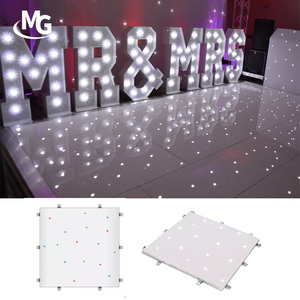(5120 products available)



























































































































































































220V flashing LEDs are high-voltage light-emitting diodes designed to operate directly from a 220V power supply with a flashing or blinking effect. These LEDs are commonly used for signage, decorative lighting, and indicating purposes where a noticeable and attention-grabbing effect is required. Depending on the application requirements, they come in various colors, sizes, and flashing patterns.
Flashing 220V LEDs are compact and robust light sources. They are designed to emit bright light. The design includes several key elements. They ensure the LED's performance, longevity, and reliability.
Heat Sink:
The heat sink is a critical component of the LED lamp design. It dissipates heat generated by the LED during operation. The heat sink is usually made of metal, such as aluminum. It has a large surface area to promote heat dissipation. Proper heat sinking is required for LED reliability and performance. It prevents overheating, which can shorten the lifespan of the LED or cause it to fail.
Optical Lens:
The optical lens of an LED lamp focuses or diffuses the light produced by the LED. It shapes the beam and creates an illuminated pattern. The lens can be of different shapes and sizes. It can be clear or frosted, depending on the desired lighting effect and application. The lens helps in maximizing the efficiency of the light output and in reducing glare.
Electrical Components:
Several electrical components are included in the LED lamp design to ensure its proper functioning. These components include resistors, capacitors, and inductors, which are used to control the current, filter out noise, and provide stability to the circuit. Proper electrical components are required for the LED lamp design to ensure its reliability and performance.
Base and Socket:
The base and socket are important parts of the LED lamp. The base is the part of the lamp that connects to the fixture. It allows the lamp to be installed and removed easily. The socket holds the LED light source in place and ensures proper electrical contact between the lamp and the fixture. The base and socket are designed to fit standard lamp sizes, making it easy to replace incandescent bulbs with LED bulbs.
Circuit Board:
The circuit board is the backbone of the LED lamp. It connects and supports all the electrical components. The circuit board is usually made of fiberglass and has copper traces that act as the electrical pathways. It ensures that the components are properly connected and allows for the design and assembly of complex circuits. The circuit board is crucial in enabling the lamp to function as intended.
These design elements work together to ensure that the 220V flashing LED lamps are efficient, durable, and provide high-quality lighting. They are used in various applications where quick visual indication or attention is needed, such as in warning signals, decorative lighting, and electronic devices.
Flashing LEDs are used in various applications. They are used in indoor and outdoor scenarios. The lights serve functional and decorative purposes. They add to the ambiance and lighting of an area. Here are some common scenarios where 220V LED flashing lights are used:
When selecting 220V flashing LEDs, it's essential to consider various factors to ensure the right choice for specific applications. First and foremost, understanding the technical specifications of the LEDs is crucial. This includes voltage ratings, current ratings, and power consumption. Ensuring that the LEDs are designed for 220V operation and compatible with the voltage supply is vital for their proper functioning.
Additionally, considering the brightness and color of the flashing LEDs is important. Different applications may require different levels of brightness and various color options. Whether it's for indicator purposes or decorative lighting, choosing LEDs that provide the desired illumination and color effects is necessary. Moreover, one should also look at the flashing patterns and effects offered by the LEDs. Depending on the application, some may require static or dynamic flashing patterns, such as sequential, alternating, or multi-zone effects.
Furthermore, one should also consider the environmental conditions where the flashing LEDs will be used. LEDs are generally more tolerant of outdoor applications than traditional lights, but certain models may have added protection against water, dust, and other environmental factors. Considering the lifespan and maintenance requirements of the LEDs is also important. LEDs are known for their long lifespan, which reduces the need for frequent replacements and maintenance. Choosing LEDs with extended lifespan ratings can result in cost savings and hassle-free operation in the long run.
Q1: How long do 220v flashing LEDs last?
A1: LEDs have a long operational life. Typically, they can last for over 25000 hours. It is almost 25 times longer than incandescent bulbs can last.
Q2: Can users adjust the flashing speed of 220v flashing LEDs?
A2: The flashing speed of 220v LEDs cannot be changed. But, users can select from different speeds. Some LEDs allow changing the speeds. It requires using a special controller.
Q3: Are 220v flashing LEDs energy-efficient?
A3: Yes, 220v flashing LEDs are energy-efficient. They consume a lower voltage to deliver the same or even brighter light output. Their energy consumption is almost 80% less than traditional bulbs.
Q4: How do the color options of 220v flashing LEDs appeal to consumers?
A4: These LEDs have a broad color palette to choose from. They can emit white light in different temperatures. Also, they can produce static colors and color-changing effects. It appeal to users in various applications. For example, it is suitable for architectural lighting, stage lighting, and mood lighting.
Q5: Are 220v flashing LEDs safe to use?
A5: LEDs are solid-state lights. They are more rugged and resistant to breakage than traditional bulbs. Also, they do not contain hazardous materials like mercury.